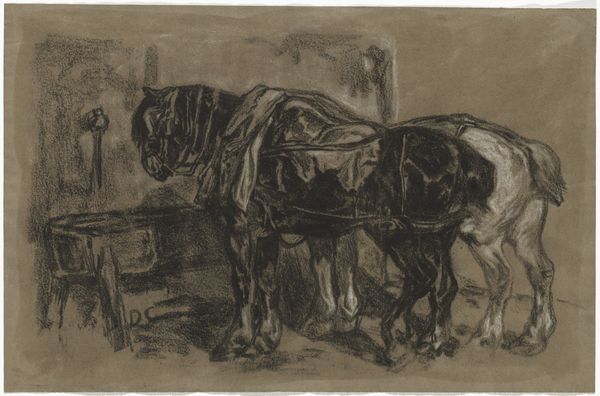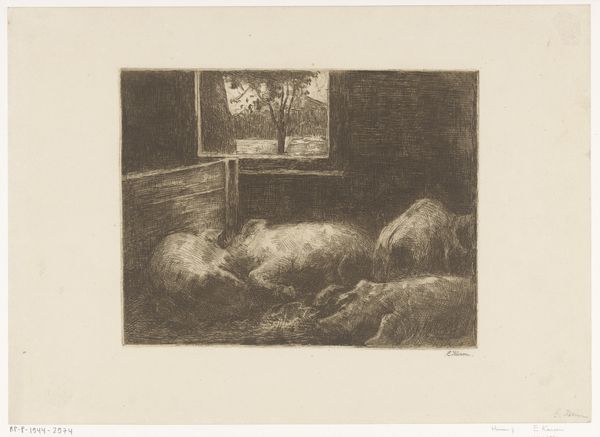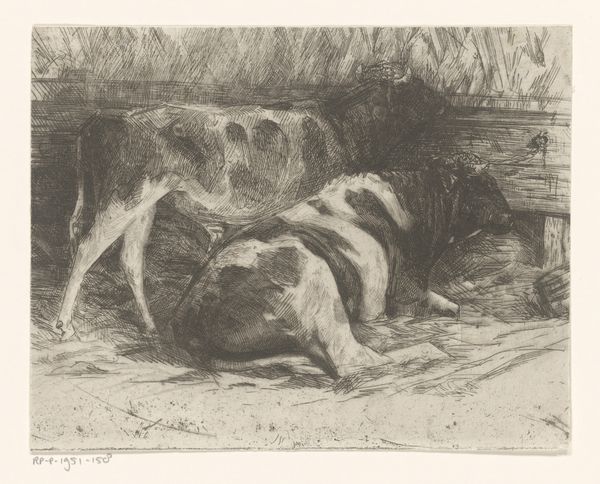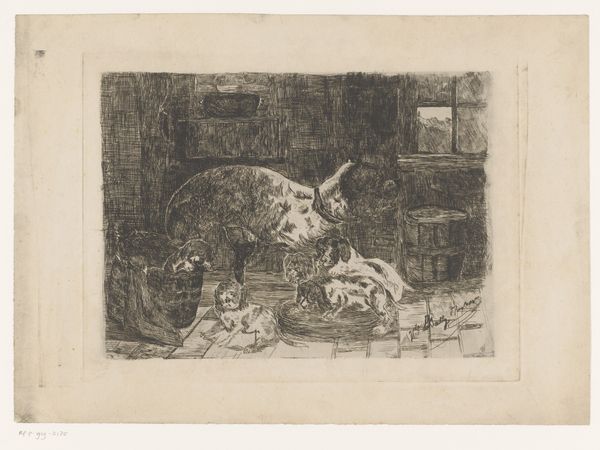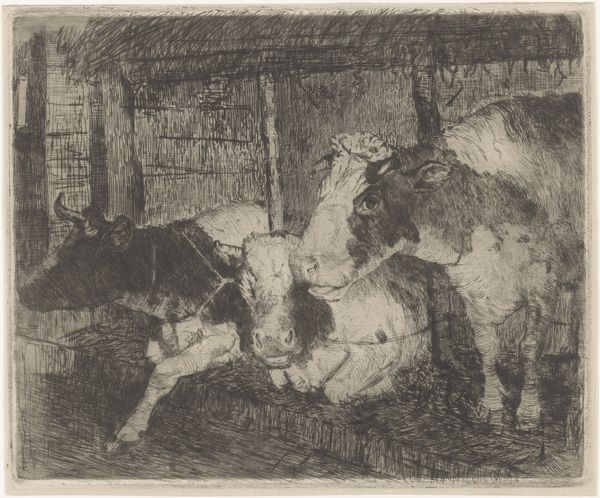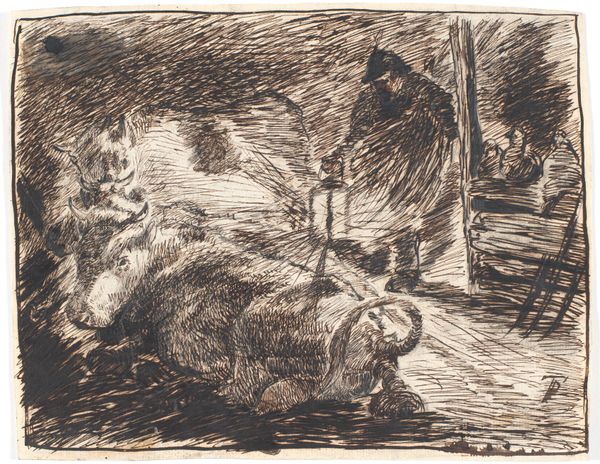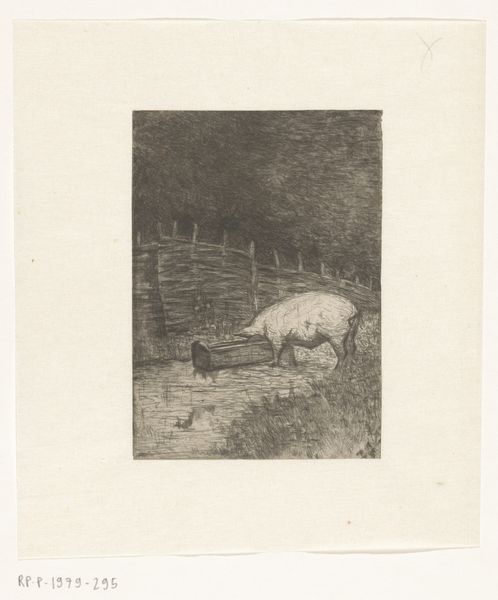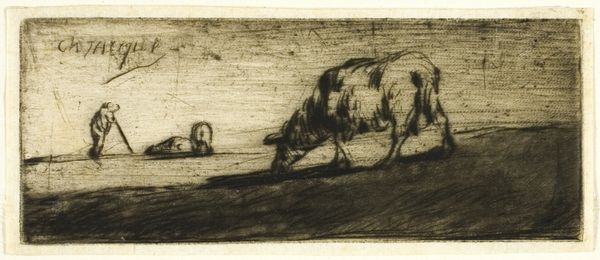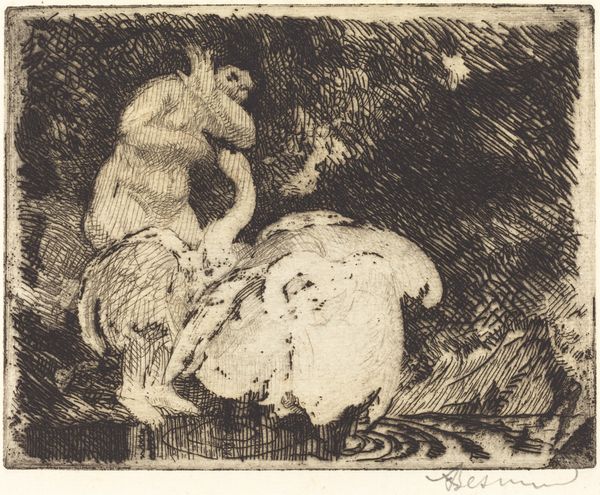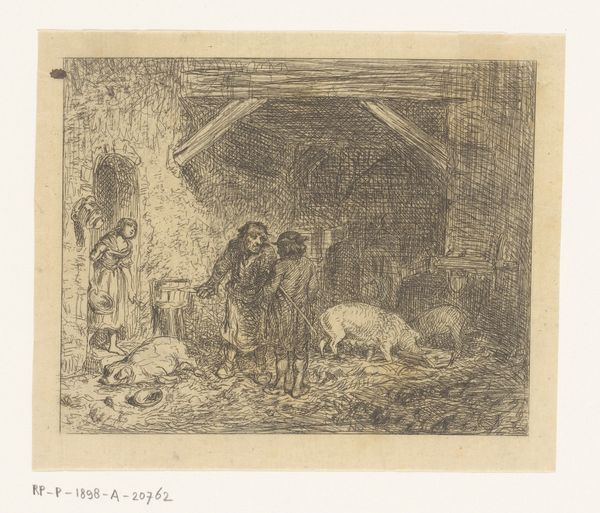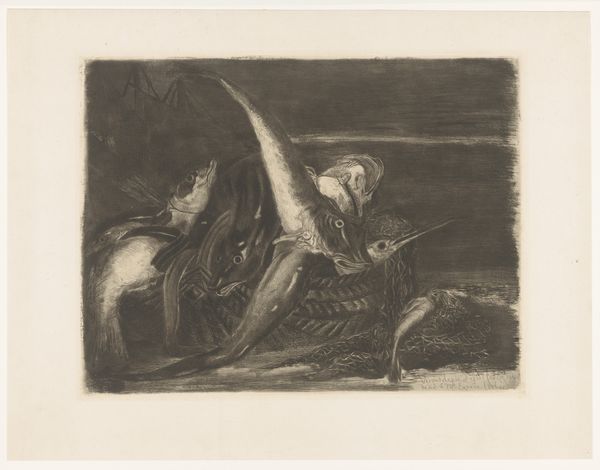
drawing, print, etching, engraving
#
pencil drawn
#
drawing
# print
#
etching
#
pencil sketch
#
pencil drawing
#
genre-painting
#
engraving
#
realism
Dimensions: height 240 mm, width 319 mm
Copyright: Rijks Museum: Open Domain
Curator: Let’s discuss Charles Verlat’s "Ezel en zwijn" from after 1880, a print realized through etching and engraving. Editor: Yes, looking at this image, I'm struck by how gritty it feels. The textures created by the etching and engraving seem to highlight the physical reality of these animals – the donkey’s rough coat, the pig's coarse skin. How do you see this emphasis on materials influencing our understanding of the work? Curator: I see the print medium as central to the artwork’s meaning. Consider the historical context: prints allowed for wider dissemination of images. Verlat's choice of this medium speaks to a desire to depict these working animals, the donkey especially, for a potentially broader, even working-class, audience. Think about the labor involved in creating such an intricate print - does it somehow mirror the labor of the animals represented? Editor: That's fascinating! I hadn't considered the connection between the printmaking process and the subject matter. Do you think the realism style also plays into that, emphasizing their role in society? Curator: Precisely. Realism here isn’t just about depicting things accurately; it’s about acknowledging the social and economic realities tied to these animals. We must consider where the materials originated. Did the artist prepare them? And how did this context relate to the lives of people who engaged with images of these animals? Editor: So, seeing this artwork through a materialist lens reveals not just the animals but also their context within a system of labor and consumption? Curator: Exactly. By examining the materials and means of production, we start to understand the social relations embedded within the image. Editor: Thank you, I now recognize that the process behind this realistic depiction is an active commentary, which sheds new light on its meaning! Curator: Indeed, it highlights that every art work contains and reflects both its subject and means of production and labor.
Comments
No comments
Be the first to comment and join the conversation on the ultimate creative platform.
